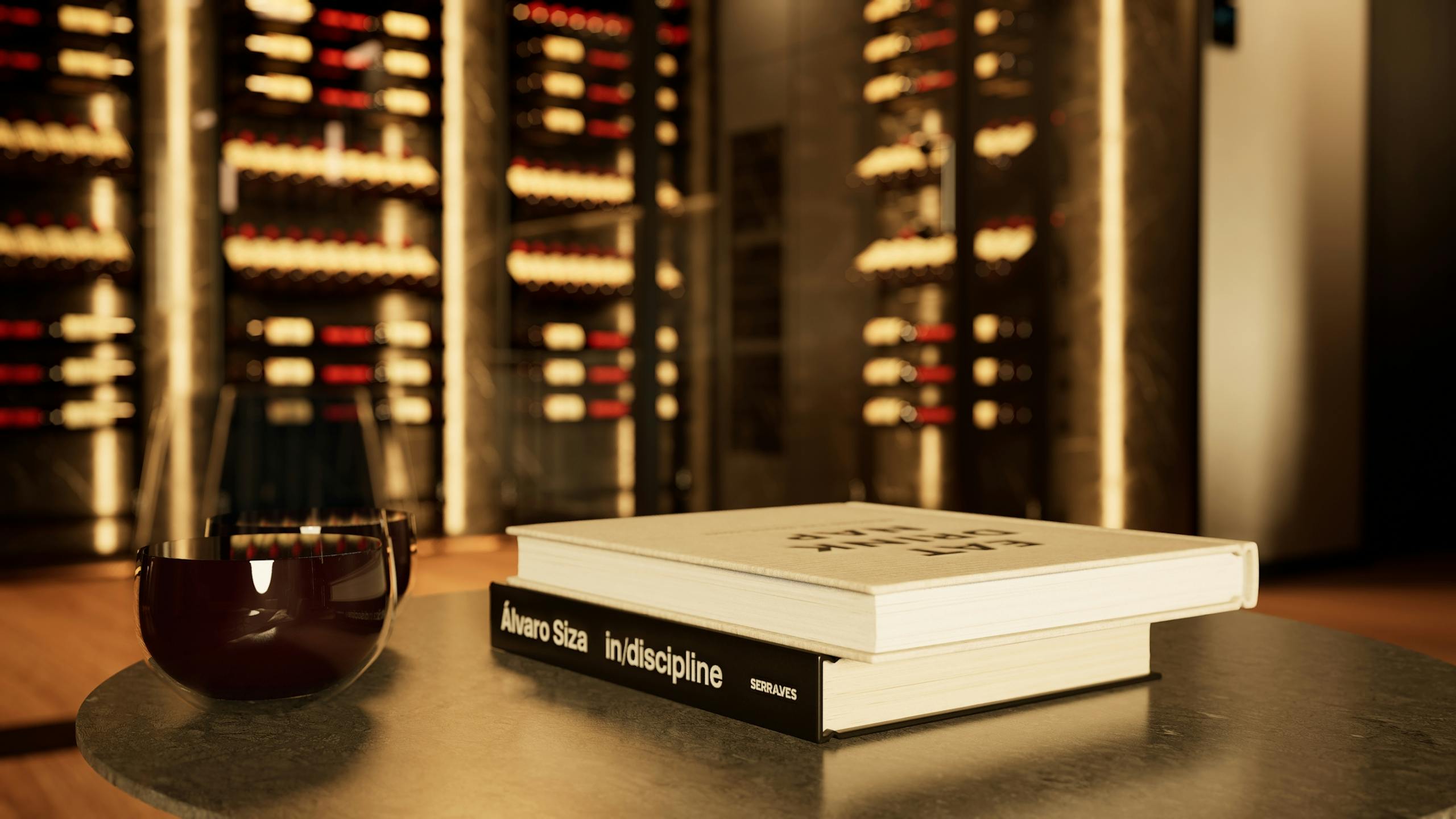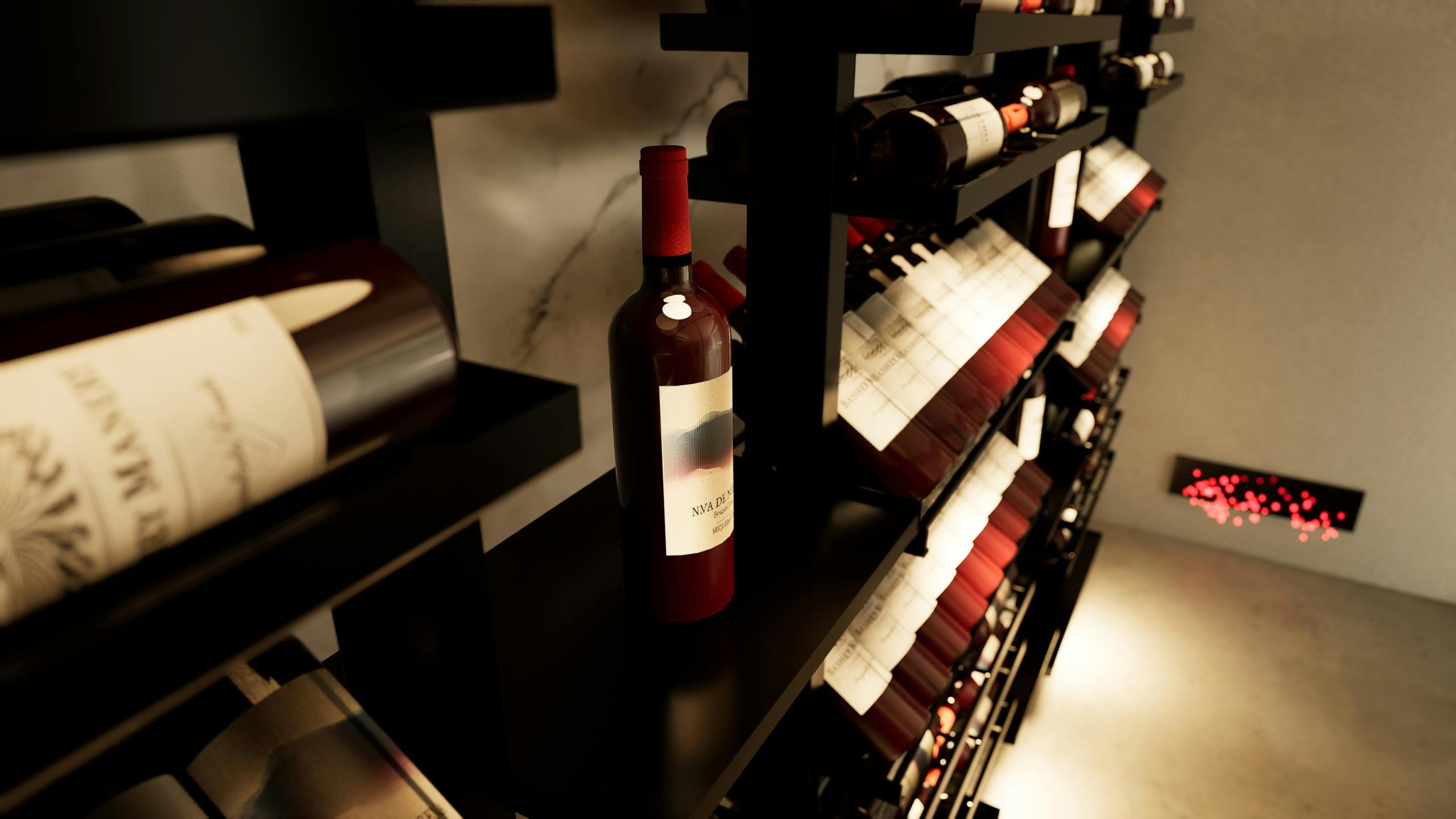
March 22, 2025
Cooling a Modern Glass Wine Wall: Builder’s Checklist for Seamless Ducted Integration
Designing a floor‑to‑ceiling glass wine display? Follow these placement, duct‑sizing and installation rules—drawn from the Panthaire APEX user manual—to keep bottles at 55 °F with zero visible equipment.
Glass wine walls have become the centrepiece of many new homes and restaurants, but all that glazing increases heat load and leaves no place to hide bulky equipment. The answer is a fully ducted system that lives outside the display, sending conditioned air through discreet grilles. Use this checklist to plan a flawless installation.
1. Understand the Cooling Challenge
- Glass conducts ambient heat into the enclosure.
- Interior lighting adds additional watts of heat.
- Any visible fan box or grille undermines the clean aesthetic.
A ducted layout solves all three by moving the cooling unit to a utility area and balancing supply and return airflow through ceiling or toe‑kick vents.
2. Follow Proven Supply‑Return Layouts
- Supply vent: high on one side of the display to introduce cool air gently at the ceiling.
- Return vent: low on the opposite side to pull warmer air back to the coil.
- Keep vents at least 6 ft (1.8 m) apart for smooth circulation .
3. Use the Correct Duct Size and Length
- All APEX models ship with 8‑inch insulated flex ducts for both supply and return .
- Maximum equivalent length is 25 ft per run; count each 90° elbow as 5 ft.
- Seal every joint with UL‑181 mastic—air leaks cost capacity and can cause coil freeze‑up.
4. Place the APEX Unit for Quiet, Clean Lines
- Mount the unit in a ceiling void, mechanical closet or garage—anywhere with 18 in. (45 cm) clearance on all sides for airflow and service access .
- Always duct the condenser air intake to avoid pulling warm exhaust back into the machine (see Air‑Flow Diagram, user manual page 13) .
- Use vibration pads under the chassis if bolting to joists or a platform.
5. Builder’s Quick Checklist
✔ Run supply and return ducts before drywall; avoid tight bends.
✔ Frame vent openings for 8 × 16 in. (200 × 400 mm) grilles on APEX7000 or 8 × 12 in. (150 × 300 mm) on smaller models.
✔ Keep low‑voltage thermostat wiring away from power cables.
✔ Leave a service panel or removable ceiling tile for future filter changes.
✔ Verify airflow with tissue‑test at each grille before closing cabinetry.
6. Avoid These Common Mistakes
- Undersized ducts—reduce cooling capacity and waste energy.
- Grilles too close together—creates a short‑circuit that bypasses the bottles.
- Over‑bright lighting inside the display—adds unnecessary heat load.
- Blocking the return vent with cases or décor—starves the system of airflow.
7. Next Step: Get a Free Layout Review
Schedule a quick call with our technical team; email your floor plan and we’ll mark optimal vent locations and duct routes—no charge.
FAQ
Q: Can the cooling unit be hidden completely?
A: Yes. Panthaire’s APEX units are designed for remote mounting; only the supply and return grilles remain visible in the wine wall.
Q: How far can I run the supply and return ducts?
A: Up to 25 feet each, counting every 90‑degree bend as 5 feet for friction loss.
Q: What grille sizes work best for glass walls?
A: For APEX3500/5000 use 8 × 12 in. grilles; for APEX7000 use 8 × 16 in., keeping 2 in. of free air around slats.
Q: How much clearance does the unit need in a ceiling void?
A: Maintain 18 inches (45 cm) on all sides for airflow and service access.
Q: Do I need a separate fresh‑air intake?
A: It’s optional but recommended; bringing temperate air to the condenser improves efficiency and prevents warm exhaust recirculation.

